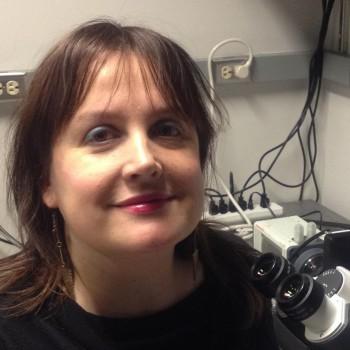Congratulations to the 2017 SDB Awardees
In 1995 the SDB inaugurated the Edwin Grant Conklin Medal to honor a society member who has performed distinguished and sustained research in developmental biology. The recipient delivers a feature lecture at the annual society meeting and is presented with a commemorative plaque by the incoming SDB President.

Philippe M. Soriano (Icahn School of Medicine at Mount Sinai)
The Soriano laboratory is interested in the general question of how biological specificity is acquired upon engagement of growth factor signaling. A major focus of their research is in craniofacial biology, where they seek to identify the pathways by which Platelet Derived Growth Factor (PDGF) and Fibroblast Growth Factor (FGF) signaling in multipotent neural crest cells regulate the development of the midface. They are also studying the signaling pathways engaged by FGFs that govern the establishment of stem cell fates in the early embryo.
Elizabeth D. Hay New Investigator Award
Established in 2017 by the SDB Board of Directors in honor of Dr. Elizabeth D. Hay, this award recognizes new investigators who have performed outstanding research in developmental biology during the early stages of their independent career. Nominees are evaluated on their independence from mentors, as well as the originality, significance, and impact of their research on the broader field of developmental biology. The recipient will deliver an award lecture at the SDB annual meeting.

Maria Barna (Stanford University)
Maria Barna is an Assistant Professor in the Departments of Developmental Biology and Genetics at Stanford University. Dr. Barna obtained her B.A. in Anthropology from New York University and her Ph.D. from Cornell University, Weill Graduate School of Medicine. She completed her thesis work in the lab of Dr. Lee Niswander in the Developmental Biology Department at Sloan Kettering Institute in 2007. Dr. Barna was subsequently appointed as a UCSF Fellow through the Sandler Fellows program, which enables exceptionally promising young scientists to establish independent research programs immediately following graduate school. In 2013, she received a dual appointment as an Assistant Professor in the Departments of Developmental Biology and Genetics at Stanford University. Dr. Barna has received a number of distinctions including being named a Pew Scholar, Alfred P. Sloan Research Fellow, and top ’40 under 40’ by the Cell Journal. She has received the Basil O’ Connor Scholar Research Award and the NIH Directors New Innovator Award. In 2016, she was the recipient of the Rosalind Franklin Young Investigator Award, an award given to two female scientist in the world every three years in the field of genetics and the American Society for Cell Biology Emerging Leader Prize. She has also received the H.W. Mossman Award in Developmental Biology and the Tsuneko and Reiji Okazaki Award. She is presently a NYSCF Robertson Stem Cell Investigator.
The Barna lab studies how intricate control of gene expression and cell signaling is regulated on a minute-by-minute basis to give rise to the remarkable diversity of cell types and tissue morphology that form the living blueprints of developing organisms. Work in the Barna lab is presently split into two main research efforts. The first is investigating ribosome-mediated control of gene expression genome-wide in space and time during cellular differentiation and organismal development. This research is opening a new field of study in which we apply sophisticated mass spectrometry, computational biology, genomics, and developmental genetics, to characterize a ribosome code to gene expression. Their research has shown that not all of the millions of ribosomes within a cell are the same and that ribosome heterogeneity can diversify how genomes are translated into proteomes. In particular, they seek to address whether fundamental aspects of gene regulation are controlled by ribosomes harboring a unique activity or composition that are tuned to translating specific transcripts by virtue of RNA regulatory elements embedded within their 5’UTRs. The second research effort is centered on employing state-of-the-art live cell imaging to visualize cell signaling and cellular control of organogenesis. This research has led to the realization of a novel means of cell-cell communication dependent on a dense network of actin-based cellular extension within developing organs that interconnect and facilitate the precise transmission of molecular information between cells. They apply and create bioengineering tools to manipulate such cellular interactions and signaling in-vivo.
Last Updated: 2017-06-30